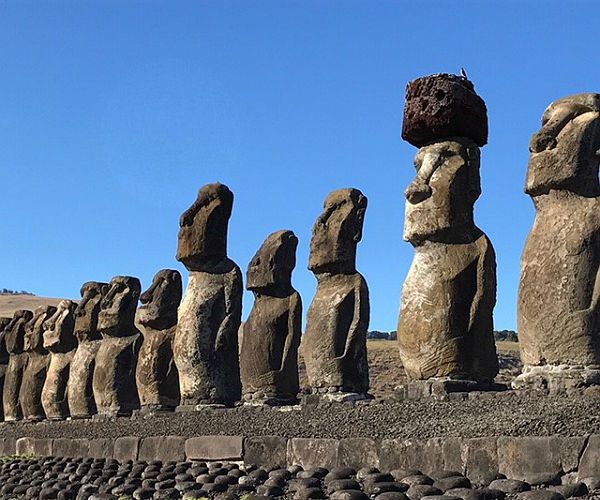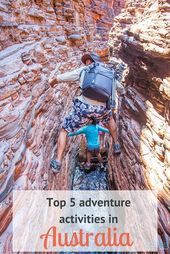
Easter Island or Rapa Nui as the locals call it, requires a long journey and only one plane can fly there at a time, but it is one of the most remarkable places to visit and has an equally incredible story to match.
1. It is the most remote island in the world
It is situated on one corner of the Polynesian Triangle in the Pacific 3,700 km from Chile in one direction and 4,200 km from Tahiti in the other. It was discovered on Easter Day by the Dutch 50 years before Cook arrived in 1774 and there is only one town on the island where most of its 6,000 inhabitants live, from just 36 ancestral families.
2. It has one of the longest runways in the world
Although remote, it is also home to one of the longest runways in the world (with all sorts of conspiracy theories and Close Encounters stories, no doubt prompted by Erich von Däniken’s hypothesis of an alien visitation on the island in his book Chariots of the Gods). It was however built by the Americans and funded by NASA as a potential landing place for The Challenger Space Shuttle back in the 1980s.
3. The excursion vehicle is a mini theatre
Arguably the best hotel on the island is the Hare Noi located on a hillside with nine lodges connected by wooden walkways and overlooking the Pacific. The ‘Hares’ are made almost entirely from the natural materials available on the island; tree trunks, rocks, woven reeds and thick branches to form the railings on the spacious terraces. Very rustic, very well designed and extremely comfortable.
The Hare Noi vehicle for excursions is a flat bed truck with three rows of comfortable seats constructed theatre style. A perfect way to experience the beautiful island, famous for its 900 Moai scattered across the lush volcanic landscape – less the one the British stole in 1860 and presented to Queen Victoria, now in the British Museum.
4. The Moai can weigh up to 60 tons
The Moai were carved from tuff, a compressed volcanic ash found on the Rano Raraku volcano, where 394 Moai in varying stages of completion are still visible today. The early Moai were 4m high and weighed in at 12.5 tons but as the competition to erect the biggest and best intensified so their size increased. The largest on the island is 20m high and estimated at 60 tons, although it was never fully excavated from the ground at Rano Raraku. The Rapa Nui people had a top knot in their hair, they still do, it is known as a Pukao. So, they chiselled huge Pukao from red volcanic rock to be lifted onto the Moai’s head.
5. The Moai ‘walked’ across the island
How they were moved from the volcanic quarry to the perimeter of the 163 sq km island where the tribes were living was explained by the eminent American archaeologist Terry Hunt. He discovered that the base of the Moai was carved to allow it to lean forward slightly, which allowed a pendulum walking action. Teams on either side would control the swaying motion as it walked pivoting from side to side and a team at the back stopped the edifice from toppling over. In 2012 he proved his theory with a 5 ton replica and with just 18 men ‘walked’ the Moai 100m in just 40 minutes.
6. The Rapa Nui population declined to just 111
As the competition to create the largest and therefore most powerful Moai intensified so the tribes sabotaged their rival’s Moai. After all the Moai had fallen the Rapa Nui people believed they were no longer protected and so it proved. The Spanish and the mainland Chileans came to Rapa Nui and took many of the locals as slaves, leaving behind disease, sickness and infection, by 1888 the 20,000 population had been decimated to just 111.
It wasn’t until 1956 when Thor Heyerdahl, who sailed the Kon-Tiki expedition, came to the island that the first Moai was restored. It was re-erected where the Polynesian king first came ashore and discovered the island. Since then some of the ‘Abu’ platforms have been recreated and Moai returned to their dignified position protecting the remaining Rapa Nui people on the island.
David Moore is Author of ‘Turning Left Around the World’. Published by Mirador and available from Amazon, it is an entertaining account of David and his wife’s travel adventures – often intriguing, frequently funny and occasionally tragic.
If you would like to be a guest blogger on A Luxury Travel Blog in order to raise your profile, please contact us.

